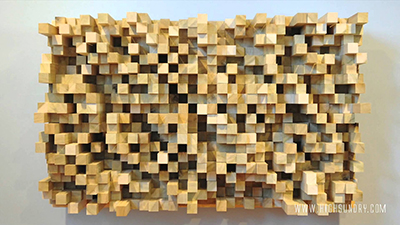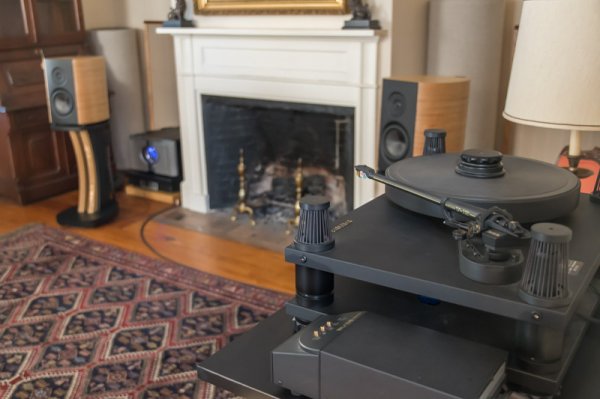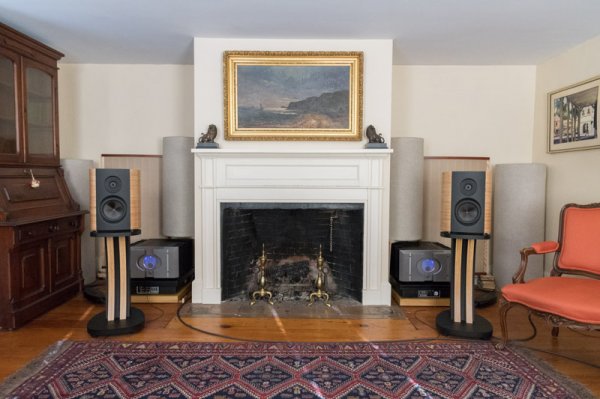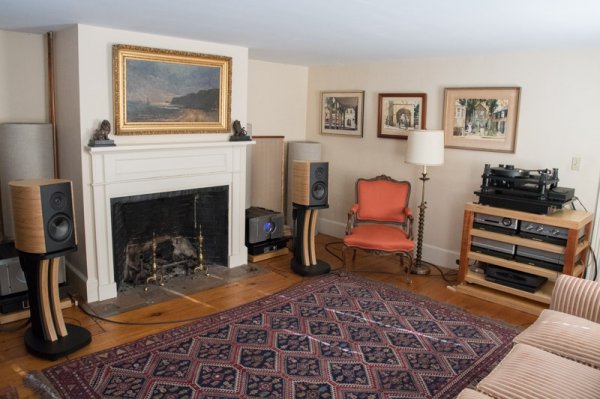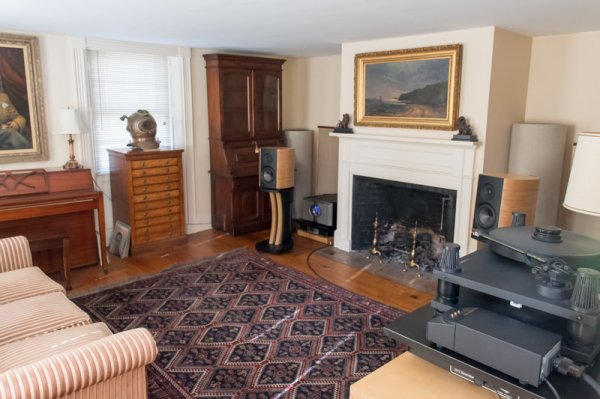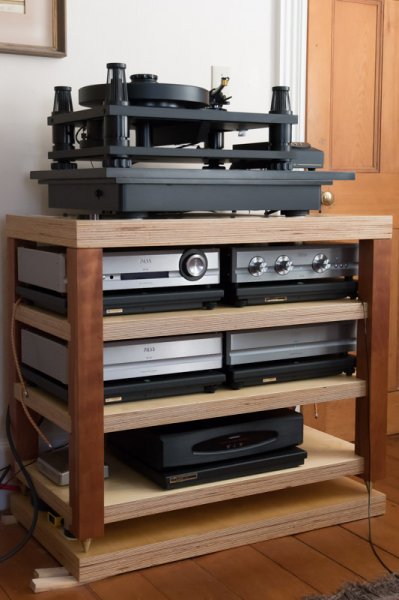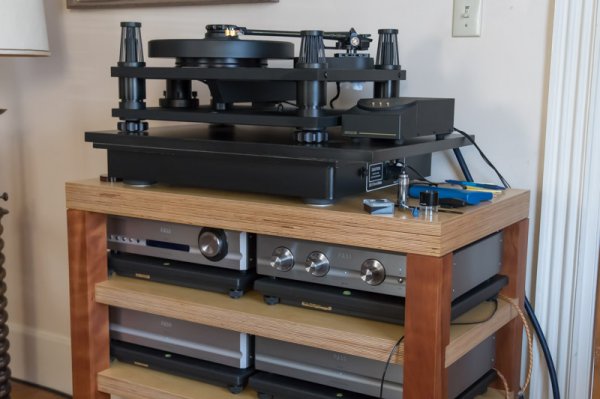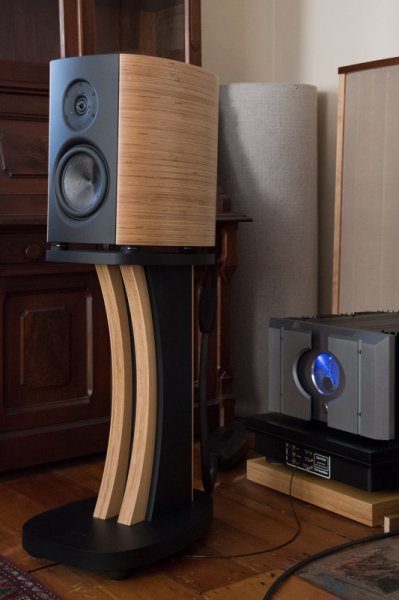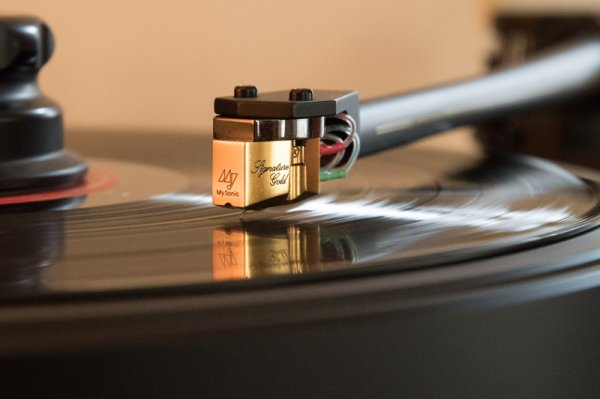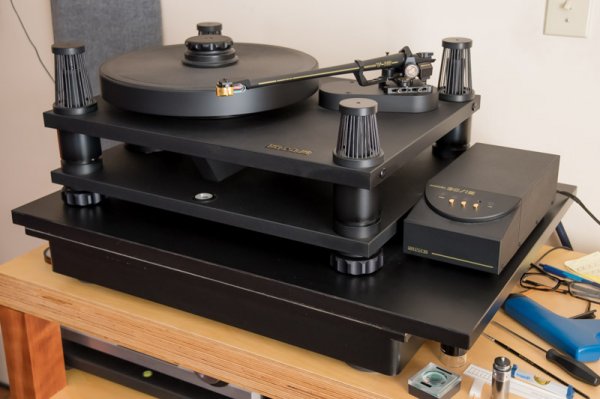Yesterday Peter invited me to listen to the newest changes. I thought, it can't be that the removal of the glass, which doesn't cover that much surface, makes so much difference. At least not as much difference as for me, who naturally has less experience with his system than Peter himself, to be able to clearly point it out, while he probably could do that much more easily. So I was already looking for a polite way to say that alas the sonic improvement wasn't that clear to me

. I didn't need to have worried: it was absolutely pathetic how obvious the differences were.
I asked Peter if tonearm settings had changed -- which he answered in the negative -- because I heard a significantly different sound. Now I understand Peter's enthusiasm about the acoustic changes.
Art Pepper+Eleven: we could crank up the volume more because it was so free of distortion. While I had admired the rendition of that LP on Peter's system before, in terms of explosive dynamics, incredible and infectious rhythm & timing, and the resolution of the brass section, this was even better. Before the changes I observed that Art's sax tended to overpower the brass section because at times it was blaring. Now it was much cleaner, and the subjective balance had shifted in favor of more prominence of the brass band while Art was still very much upfront, a true frontman. The sound was very open, significantly more than the last time, and the timbral resolution of the brass section was even better, to a jaw-dropping level. Yet the brass, solo or grouped, still had great natural bite, which to me is really important.
Gidon Kremer/Elena Kremer, violin and piano, Philips LP: While I had always admired the resolution of the micro-oscillations from the instrument's tone on the recording, I had had some reservations about the overall timbre. Now the timbre was much more complete, and thus convincing. What most had been lacking was high-frequency extension and airiness. Now the high frequencies seemed to extend forever (of course they didn't, but you get the idea). That high frequency extension must also have contributed to the more open sound on Art Pepper+Eleven. Interesting that sometimes in a
less reflective environment you can get
more high frequency extension! The sound was effortlessly 'fast', as it had been on Art Pepper+Eleven as well. It was also, again, very clean. Sometimes only the removal of distortion makes you aware of how much there had been before.
Another significant improvement in the reproduction of that LP was ambient retrieval. Now you could clearly hear the halo of hall resonance, which previously had only been alluded to in a fuzzy manner, and that dying out of the last note as just subtle echo in the hall acoustic was spectacular. The removal of acoustic noise from the room, which earlier had masked the potential for reproduction of low-level spatial information, now revealed the enormously low noise floor of the Pass electronics.
Finally, I heard an, apparently famous, choir recording. At first a soprano where you could clearly hear the acoustics of the church in which it was recorded, and then
Stille Nacht (Silent Night) from the choir. The openness and naturalness of the sound was remarkable, and the resolution of the individual choir voices was outrageously good. Just stunning.
By a mile the best sound I have heard from Peter's system. It was impressive and immensely enjoyable.
